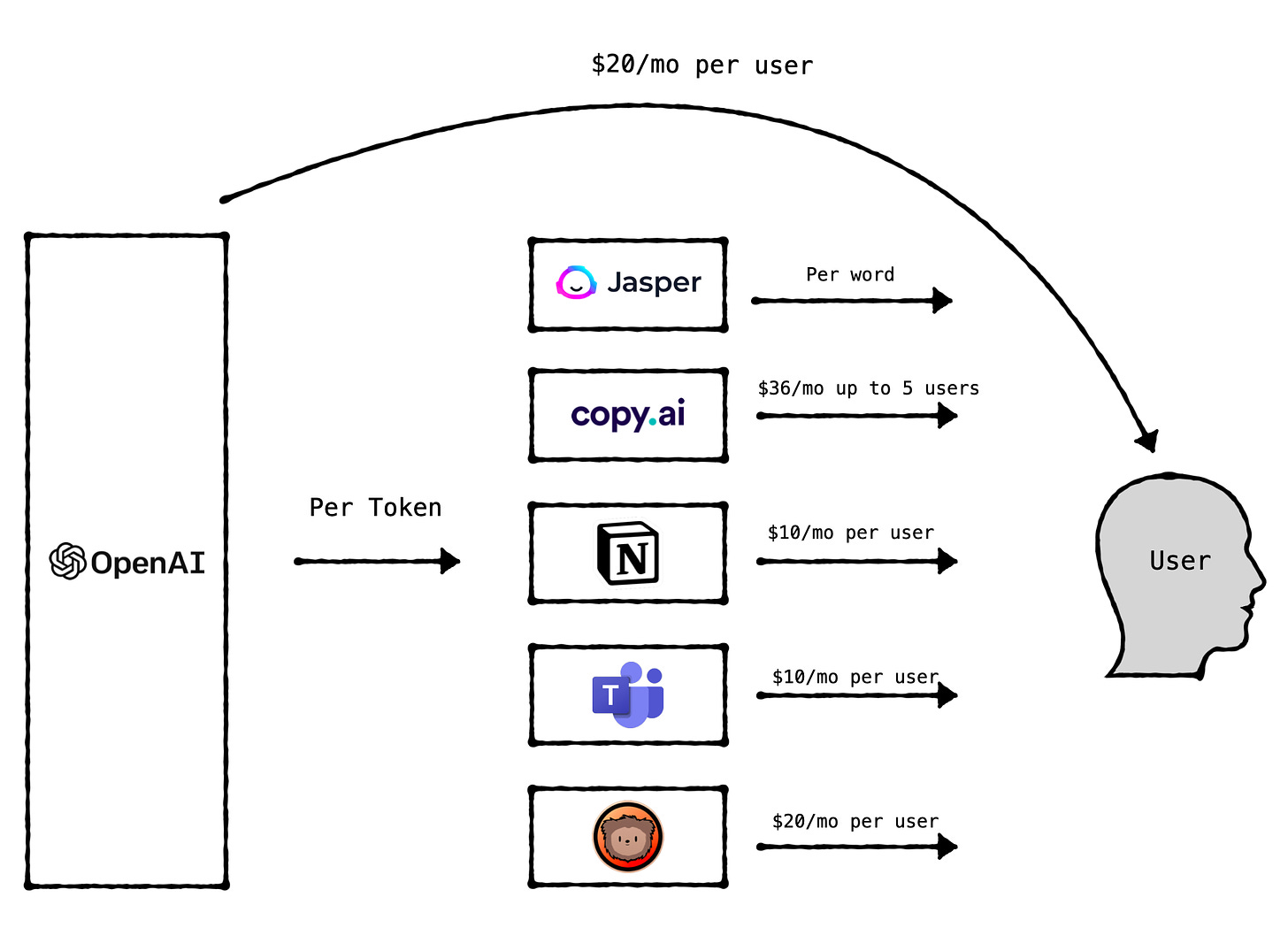SaaS Pricing is hard. PricingSaaS is your cheat code.
Monitor competitors, track real-time benchmarks, discover new strategies, and more.
Pricing Trend 🔮
I was recently jamming with my good friend (and former Hustle-staffer) Trung Phan about generative AI pricing. Trung recently launched an AI app called Bearly.ai (it’s dope — check it out), and helped narrow down a list of companies offering generative AI features in a variety of ways.
Here’s a breakdown of how this list is currently charging:
Three things stick out to me:
Jasper is the only company using word volume as a value metric. Both Copy.ai and Bearly.ai use a word count limit on their free plan, but all of Jasper’s plans are underpinned by words generated. This strikes me as a difficult metric for consumers to understand given they may not know how many words to expect to generate. Notably, OpenAI charges API users per Token, which equates to words generated.
Flat rate per user is a popular model. OpenAI is charging $20/mo per user for ChatGPT, Bearly is charging $20/mo per user for its suite of GPT functionality, and Copy.ai is charging a flat rate for unlimited words in its pro plan. It feels like this is the easiest way to charge right now, and the actual price point will be highly dependent on your target market.
Add-on price points are consistent. Notion and Microsoft added AI functionality to their respective tools, both priced it at $10/mo per user, which seems reasonable for platforms with wide use-cases like theirs.
I expect this pricing to evolve quite a bit (and am sure it already has).
Something Tactical 💡
Back in the day I used to save pricing articles and revisit them if they had nuggets of wisdom that I really liked. One favorite is from Kustomer CEO Brad Birnbaum on the SaaStr podcast in 2018:
So pricing’s a really difficult thing, right? It’s something that we wrestled with in the earliest days of Kustomer. We wanted to be innovative. We thought innovator pricing would be very important to us. We quickly learned as we started talking to customers that they didn’t want innovative pricing. They wanted repeatable, consistent pricing that mapped to the budget they already had in place.
Now as we are going mid-market and above, we’re mostly replacing existing solutions, whether it be Zendesk or Salesforce. So they already had a budget in place, so they just said, “Hey, we have X amount allocated for a solution. Your solution is better, it’s robust, it does more, but this is the budget that we have.”
So they wanted a pricing model that, frankly, mapped to the way they’re accustomed to doing business that was highly predictable. So while we wanted to think about doing a consumption model here at Kustomer because we thought that was innovative, we realized our customers didn’t want it.
The takeaway? Sometimes, you don’t need to overthink it. Shoutout to the GOAT Tomasz Tunguz for sharing this on his blog, btw.
Something to think about 🤔
A member from the GBB Community is working on prepping a company for an IPO, and asked:
How should pricing strategy differ for a public company vs a private company?
If you have any thoughts, considerations, or resources — please drop them in the comments 🙏🏼




